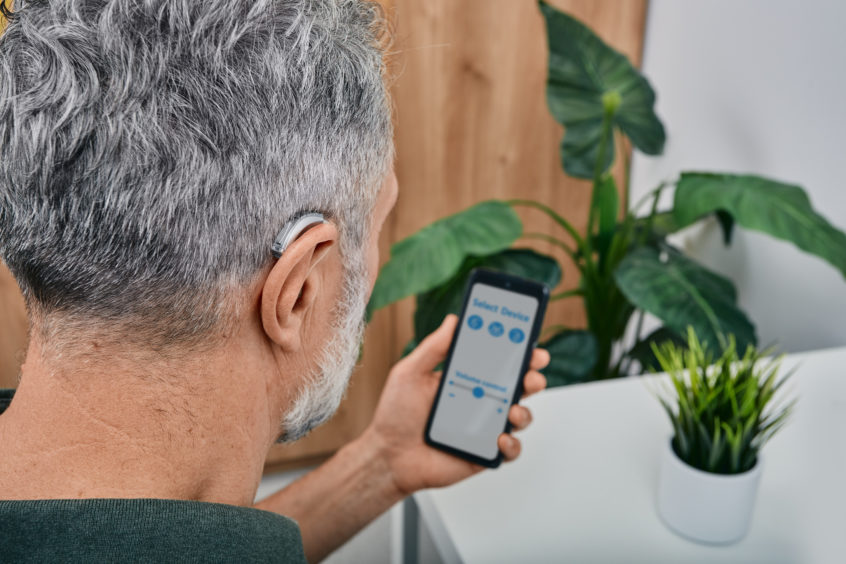Like any device that relies on digital processing technology, prescription hearing aids have become packed with features that can improve your hearing by leaps and bounds. One of those technological advances is Bluetooth connectivity.
If your prescription hearing aids are equipped with Bluetooth, you can connect to your cell phone to make hearing calls easier through both ears. You also can stream media from your phone to your hearing aids, such as audio books, video chats, music, or movies from your favorite apps.
But how is all this possible and how can you be sure your hearing aids are Bluetooth-enabled and compatible to connect to your smartphone?
Originally Bluetooth technology was developed to help us connect our keyboard, mouse and monitor to our computers without a tangle of wires or cables. When first developed, it was groundbreaking! Today, many devices, including prescription hearing aids are equipped with Bluetooth technology.
In most cases, Bluetooth devices have a fairly short range, typically 30 to 40 feet. When you use a Bluetooth device, it transfers information into a coded signal and broadcasts it out to other Bluetooth-enabled devices within range. The other devices can then pick up on the signal.
Whether you are looking for your first pair of prescription hearing aids, you’re replacing an older set, or you just want to learn more about Bluetooth-enabled prescription hearing aids, here are some key points you should be aware of.
Most individuals want to connect their hearing aids to their smartphones, which fall into one of two categories—either iPhones, which are Apple products, or Android phones, which are supported by Google technology.
- “Made-For-iPhone” (MFi) hearing aids—MFi hearing aids connect the wearer to most Apple products, including your iPhone, iPad and Apple computer (but not to an Apple watch). Prescription hearing aids equipped with MFi allow for wireless connectivity—no streamer is necessary. All hearing aid manufacturers now offer at least some devices that are compatible with MFi.
Earlier versions of MFi only allowed for one-way communication. That meant the wearer could stream sound to their connected hearing aids, but the microphones couldn’t pick up the sound of the wearer’s voice and send it to the phone, so the wearer still had to talk into their phone to carry on a conversation.
Recently though, Bluetooth version 5.2 was released, making two-way communication available without a streamer or the phone’s speaker. Not all hearing aid manufacturers offer a version that is compatible with 5.2, but for those that do, hands-free calling is now an option.
- Android-compatible hearing aids—A few years ago Android streaming for hearing aids (ASHA) became available. Now, most of the major hearing aid manufacturers have Android-compatible prescription hearing aids on the market.
Android ASHA is only available on select phones. In general, these phones are Android 10 or higher and Bluetooth 5.0 or higher. Check with your carrier for details.
- Streamers—If your hearing aids are older and don’t automatically connect with your phone or other devices, you may need to buy something called a streamer from the manufacturer of your hearing aids. Streamers make it possible to achieve universal Bluetooth connectivity with your hearing aids. The streamer either hangs from your neck, typically on a lanyard, or clips to your clothing.
The streamer can receive the audio from Bluetooth-enabled devices like your phone. Once the streamer picks up the sound from a device, it re-transmits the sound to the hearing aids. Streaming accessories do cost extra, and prices vary depending on the manufacturer and technology. Streamers do allow for hands-free calling.
So, don’t forget to ask about Bluetooth connectivity if you’re looking for new prescription hearing aids. Even if your phone isn’t the latest model, a streamer could help you connect to the newest hearing aid technology and enjoy all the benefits of streaming sound directly to your hearing aids.



